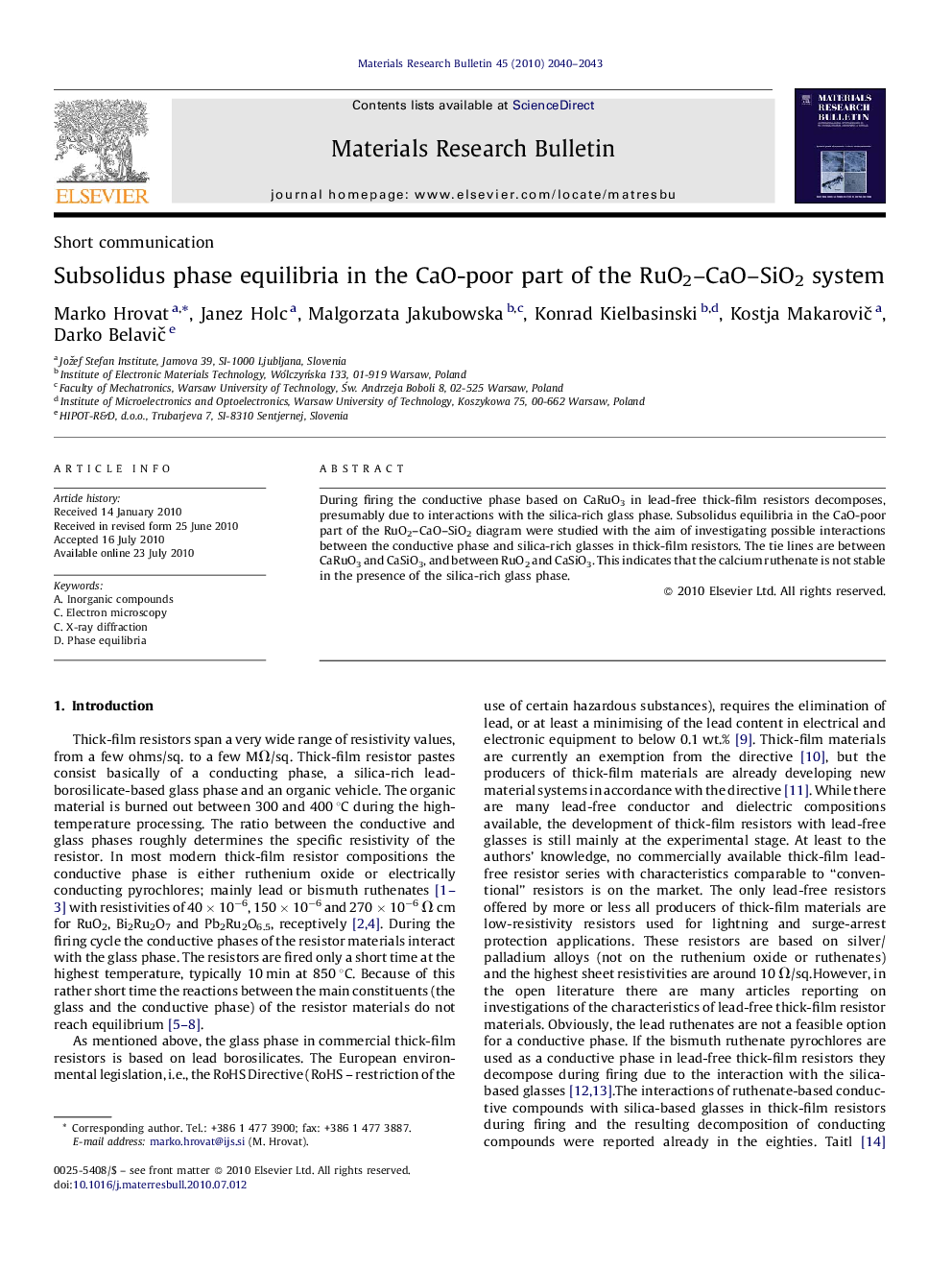| Article ID | Journal | Published Year | Pages | File Type |
|---|---|---|---|---|
| 1490709 | Materials Research Bulletin | 2010 | 4 Pages |
Abstract
During firing the conductive phase based on CaRuO3 in lead-free thick-film resistors decomposes, presumably due to interactions with the silica-rich glass phase. Subsolidus equilibria in the CaO-poor part of the RuO2–CaO–SiO2 diagram were studied with the aim of investigating possible interactions between the conductive phase and silica-rich glasses in thick-film resistors. The tie lines are between CaRuO3 and CaSiO3, and between RuO2 and CaSiO3. This indicates that the calcium ruthenate is not stable in the presence of the silica-rich glass phase.
Related Topics
Physical Sciences and Engineering
Materials Science
Ceramics and Composites
Authors
Marko Hrovat, Janez Holc, Malgorzata Jakubowska, Konrad Kielbasinski, Kostja Makarovič, Darko Belavič,
